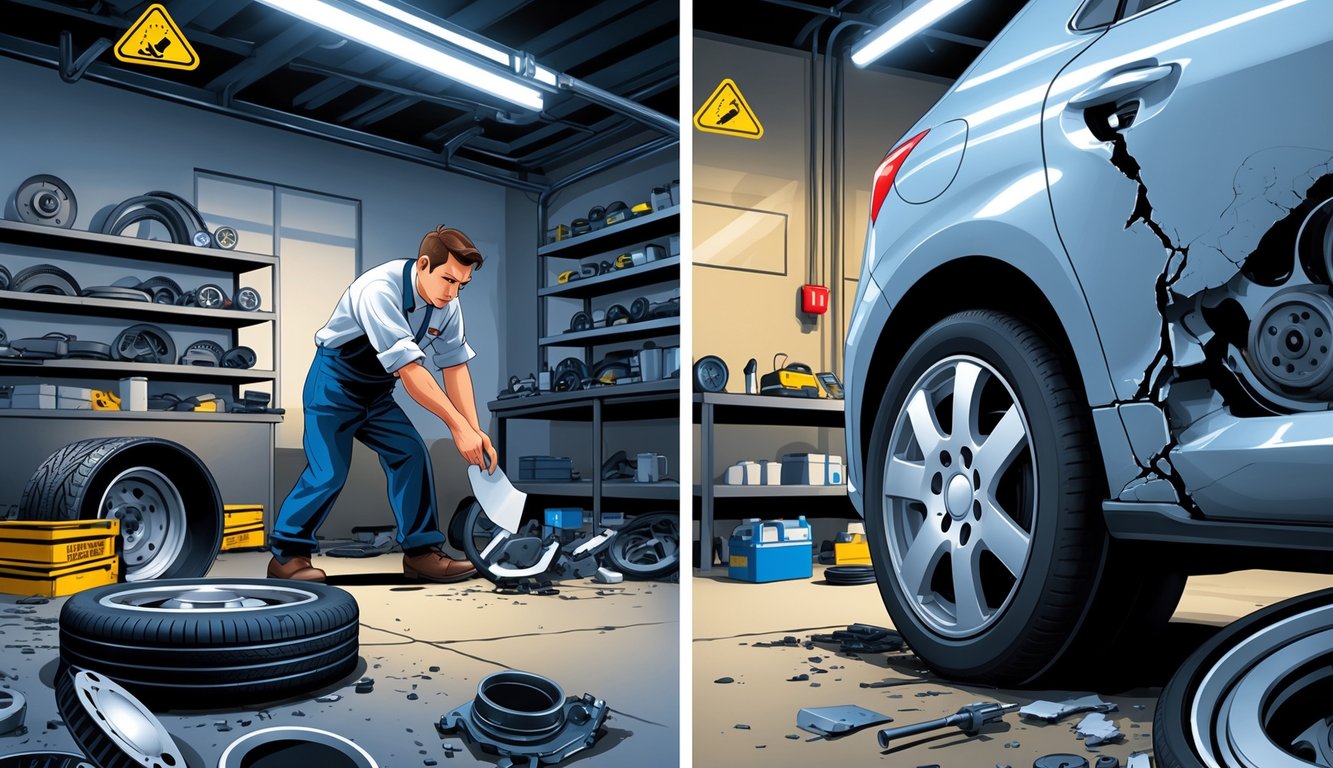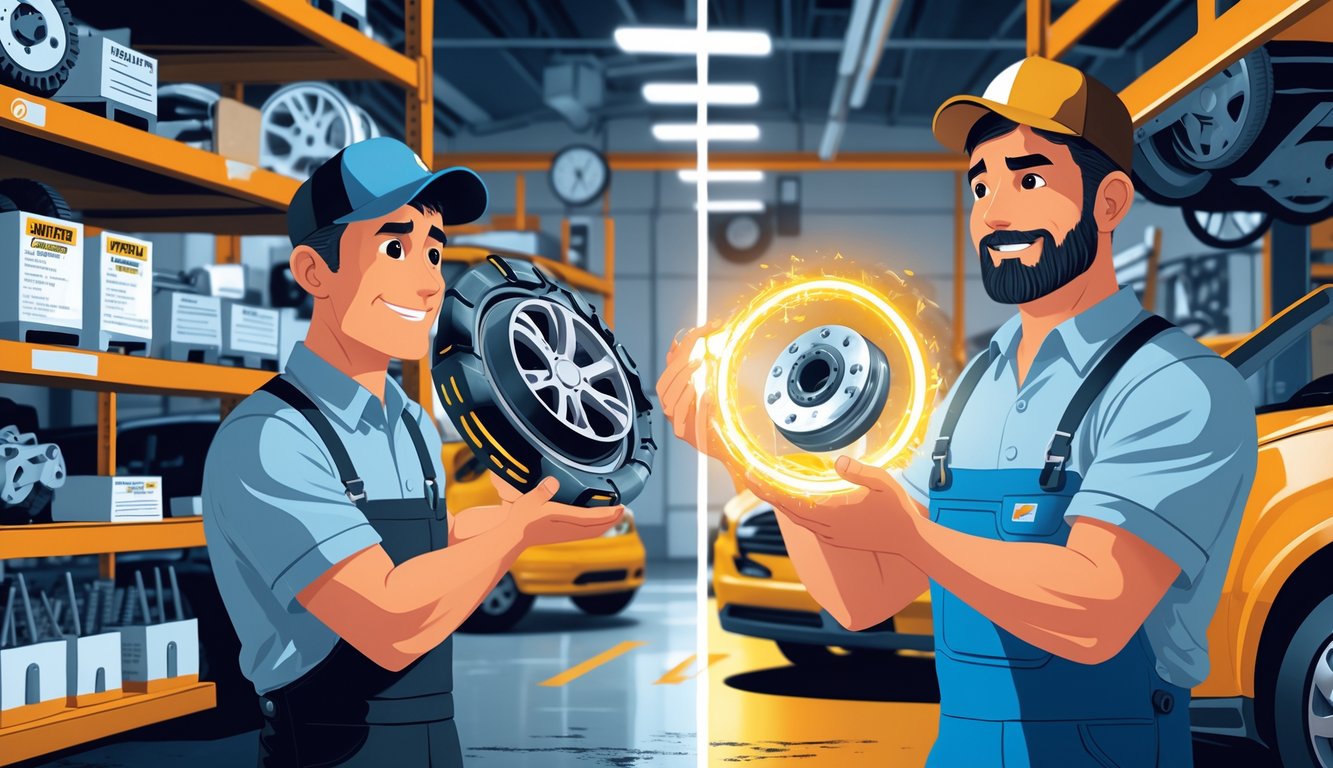
You know what’s wild? In every shop I’ve worked, there’s always some story about someone swapping a bumper for a bargain-bin knockoff, and then, boom, the car folds up in a low-speed tap like it’s made of tinfoil. People love to whisper about it, but honestly, it’s not even rare. Shops cut corners with these sketchy “grey market” or “aftermarket” parts all the time. It’s not just annoying, it’s a gamble—and yeah, the 2018 Insurance Institute for Highway Safety (IIHS) study says so, but do people even care? Over 211,000 fake auto parts got seized in one year. That number just floats around my brain sometimes. Nobody’s talking about how a “bargain” brake pad or bracket just gives up when you need it most.
Insurance companies? They’re always pushing these swaps, promising “just as good as OEM.” I guess they forget that collision safety systems don’t care about your wallet—they want parts that fit to the millimeter, or else airbags go off wrong, or door beams just…snap. I’ve seen drivers roll in all proud of their discount shop savings, and then, what do you know, they’re back with double the damage. Also, some of those fake fenders smell like melted crayons—nobody warns you about that. Car owners? They’re distracted by all the “direct fit” hype, and unless I awkwardly bring it up during an oil change, nobody’s asking about crash tests or certifications.
Here’s the thing: real mechanics swap horror stories about headlight housings that melt in the sun or pads that vanish in three months, but it all gets drowned out by cartoon ads for “OEM style” junk. Ever compare welds on a real part versus the knockoff? Honestly, don’t. You’ll lose faith in humanity. Every time some shop pushes a cheap part as “just like factory,” I half-expect the next headline to be about lawsuits, not quiet recalls. Maybe read the IIHS findings and what experts say before assuming a $50 savings is worth it.
Understanding Cheap Replacement Parts
Honestly, nobody even notices cheap replacement parts until something clunks or the brakes shudder in traffic. Never while parked. Shops push these parts to save a few bucks, not because they’re better, and most people never figure out which corner got cut until it’s too late.
Definition and Common Types
So I’m standing in an auto parts store, staring at a pile of brake pads in ziplock bags—no brand, no nothing, just “universal fit” in Comic Sans. Aftermarket, generic, knock-off, whatever you want to call them, these parts usually show up with no real support, no warranty, sometimes a “for off-road use only” warning that nobody reads.
What’s usually junk? Brake pads, rotors, ball joints that squeak after a few months, filters that clog in half the time, and alternators rebuilt in someone’s basement. Airbags and sensors sneak into the “cheap replacement” bin too, which is just terrifying. A Toyota master tech once told me he’d seen belts from these brands snap before 5,000 miles. OEM belts? Forty thousand, easy. None of these cheap parts guarantee they’ll work in a crash. And, weirdly, some shops mix in used parts, figuring you’ll never notice. Who checks where a wiper arm came from?
How They Differ From OEM Parts
It’s not just marketing. OEM parts—straight from Ford, Honda, whoever—get built to exact specs, with materials that actually pass safety standards. Cheap aftermarket stuff? It’s all about cutting corners. My old boss bragged about saving money with discount rotors, but then customers kept coming back with warped wheels. Did he care? Not really.
OEM parts get tested to death. There are bulletins, legal threats, all that. I once had an off-brand fuse literally melt. The OEM one? Never a problem. Just look at the packaging: OEM is barcoded, sealed, instructions in a million languages. Cheap stuff? Maybe a blurry photocopy.
There’s a VINCheckUp guide that says your shop might offer preowned or aftermarket parts, but those rarely meet OEM standards and can tank performance or resale value. Sometimes they even void your warranty. I get why people want to save money, but I’ve seen “savings” turn into double repair bills more times than I can count.
Why Shops Choose Cheaper Parts

Eight invoices for the same car, and I still don’t get why shops keep fighting for the cheapest parts. It’s not just greed; it’s a mess of costs, pressure, and sometimes sheer laziness. Watching a tech swap in a no-name airbag module while an insurance adjuster just nods along—yeah, that’s the industry.
Affordability And Profit Margins
Picture this: flickering lights, chaos at the counter, and me wondering if anyone actually torqued that ball joint right. Sure, affordability rules everything. Genuine OEM parts cost a fortune compared to knockoffs. A reman alternator saves $200, which means more for the shop after labor and card fees.
Shops will swear customers only care about the bill. Parts from random brands, or even online shops like CarParts.com? Stupid cheap. But here’s a fun fact: some aftermarket suspension parts, bought for pennies, show up broken or wear out twice as fast. The “savings” look good on paper—until the warranty return hits and nobody wants to talk about it.
Insurance Company Pressures
I still remember this one adjuster last spring, circling “acceptable substitutes” with a pen that barely worked. Insurance companies never budge on budgets, so shops get stuck with cost caps and “preferred vendor” lists. Most insurance carriers, behind closed doors, want every non-cosmetic part swapped for something “just as good” but cheaper. Sometimes they even push “certified aftermarket” over the real thing.
Shops have their hands tied. I stumbled on a 2015 survey: nearly 29% of non-OEM parts get sent back, compared to just 6% of the original stuff (BodyShop Business). Someone’s tracking those returns, but the shop eats the cost, insurance checks the box, and another off-brand fender lands on a family car.
The Role Of Repair Shops
Some shops are just wild—“If it fits, it goes!” Nobody says it out loud, but most independents use aftermarket parts way more than OEM. Why? Workflow. OEM parts mean delays, confusing orders, sometimes telling a customer to wait an extra day.
The other day Dave, my old coworker, tried to justify slapping on a generic tie rod. “Most customers don’t ask, so why should I care?” Meanwhile, I’m staring at a stack of returns, wondering if the repeat labor is worth the tiny profit. Shortcuts save money until they don’t—every tech has a story about fixing the same thing twice because of cheap parts. Nobody cares until it’s a recall on the news.
